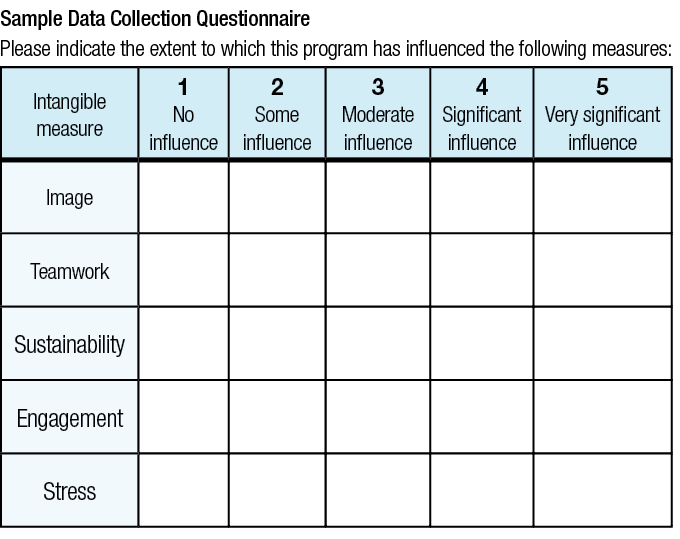
Almost every talent development program has a variety of intangibles connected to it in some way. For many programs, the intangibles actually form the basis for the program in the beginning. Intangibles are usually perceived to be soft, squishy concepts that are difficult to measure and even more difficult to monetize.
The difficulty in showing the connection of intangibles to a particular program is exacerbated by the fact that many intangibles are not formally measured in an organization. If they are not measured, how can they be connected to the talent development program?
First, we must dispel the myth that intangibles cannot be measured. Even if the intangible is a perception, and most of them are, it can still be measured. This is common in measures of customer satisfaction (or net promoter score), brand, job satisfaction, job engagement and approval ratings.
Perhaps it is helpful to define the intangibles. In our work with ROI Institute, we define a tangible measure as a measure that can be converted to money credibly with a reasonable amount of resources. Conversely, intangible measures are those that cannot be converted to money credibly with a reasonable amount of resources. Talent development programs often provide a large number of potential intangibles in an organization, such as agility, burnout, communication, grit, happiness, trust and sustainability, to name a few.
The good news is that intangible measures can easily be connected to a talent development program by following seven easy steps.
Step 1: Identify. Have the talent development program planning team list potential intangibles that may be connected to the program with no restrictions on what goes on the list. Rank the list from “most likely connected” to “least likely connected to the program.”
Step 2: Design. The most likely intangible measures are provided to designers, developers and facilitators with instructions to design the program to influence these measures. If you have the opportunity, let participants know that these outcomes are expected. For example, if the program is intended to improve work-life balance, then it should be mentioned to the participants and stakeholders.
Step 3: Develop. A questionnaire, similar to what is presented in the figure below, should be developed. This questionnaire provides an opportunity for a participant to respond to the connection of the program to a particular outcome. In this example, a 5-point scale is used with 1 representing “no connection” and 5 representing “a very significant connection.”

Step 4: Collect. The data about intangibles are collected from the most credible source, which is usually the program participants, generally about two months after program completion.
Step 5: Check. Make sure the data collection is completed in a nonthreatening and nonbiased way.
Step 6: Decide. A decision is needed about the minimum response (1, 2, 3, 4, 5) from participants to conclude whether the program had an influence. Some would select 3, indicating the program is connected to the outcome, which would mean 3, 4 or 5 would be appropriate answers for this connection. Also, you must decide on the cut-off percentage of participants in the program who connect the program to the intangibles. This could be 20 percent, suggesting that 20 percent of participants must connect the program to an intangible to be included on the list of intangibles related to the program.
Finally, step 7: Present. The data should be presented as a chart showing the intangibles connected to the program.















